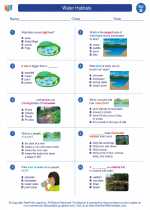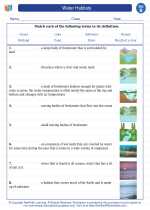Limbic System
The limbic system is a complex set of structures in the brain that is involved in the regulation of emotions, memory, and arousal. It is located between the brainstem and the two cerebral hemispheres. The limbic system plays a key role in processing and regulating emotions, as well as forming and retrieving memories.
Structures of the Limbic System
The main structures of the limbic system include:
- Hippocampus: involved in the formation and retrieval of memories
- Amygdala: responsible for processing emotions, particularly fear and aggression
- Hypothalamus: regulates basic bodily functions such as hunger, thirst, and body temperature, and is involved in the release of certain hormones
- Thalamus: acts as a relay station for sensory information
- Cingulate gyrus: plays a role in emotional and cognitive processing
Functions of the Limbic System
The limbic system is involved in several important functions:
- Emotion processing: The amygdala and other limbic structures are involved in the processing and regulation of emotions.
- Memory formation and retrieval: The hippocampus is critical for the formation of new memories and the retrieval of old ones.
- Regulation of basic bodily functions: The hypothalamus helps regulate basic bodily functions such as hunger, thirst, and body temperature.
- Behavioral and motivational responses: The limbic system plays a role in generating behavioral and motivational responses to environmental stimuli.
Study Guide
To study the limbic system, consider the following key points:
- Identify the main structures of the limbic system and their functions.
- Understand the role of the limbic system in emotion processing and memory formation.
- Explore the interconnections between the limbic system and other brain regions.
- Investigate the impact of damage or dysfunction in the limbic system on emotional and cognitive functioning.
By understanding the limbic system and its functions, you can gain insight into the complex mechanisms underlying emotions, memory, and behavior.
.◂Science Worksheets and Study Guides Second Grade. Water Habitats
Study Guide Water Habitats
Water Habitats  Activity Lesson
Activity Lesson Water Habitats
Water Habitats  Worksheet/Answer key
Worksheet/Answer key Water Habitats
Water Habitats  Worksheet/Answer key
Worksheet/Answer key Water Habitats
Water Habitats  Worksheet/Answer key
Worksheet/Answer key Water Habitats
Water Habitats  Worksheet/Answer key
Worksheet/Answer key Water Habitats
Water Habitats  Vocabulary/Answer key
Vocabulary/Answer key Water Habitats
Water Habitats  Vocabulary/Answer key
Vocabulary/Answer key Water Habitats
Water Habitats 

 Activity Lesson
Activity Lesson
 Worksheet/Answer key
Worksheet/Answer key
 Worksheet/Answer key
Worksheet/Answer key
 Worksheet/Answer key
Worksheet/Answer key
 Worksheet/Answer key
Worksheet/Answer key
 Vocabulary/Answer key
Vocabulary/Answer key
 Vocabulary/Answer key
Vocabulary/Answer key

The resources above cover the following skills:
LIFE SCIENCE (NGSS)
Biological Evolution: Unity and Diversity
Students who demonstrate understanding can:
Make observations of plants and animals to compare the diversity of life in different habitats[Clarification Statement: Emphasis is on the diversity of living things in each of a variety of different habitats.] [Assessment Boundary: Assessment does not include specific animal and plant names in specific habitats.]